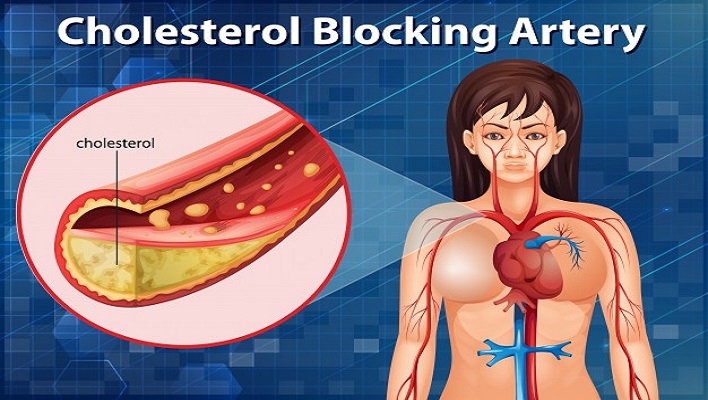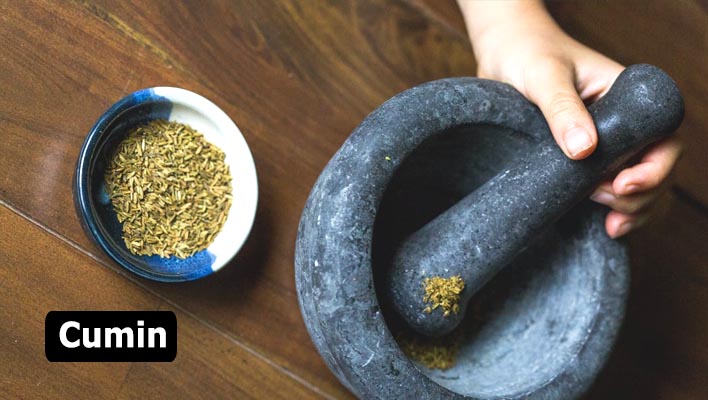Cholesterol is said to be a silent killer. Cholesterol is a type of fat. It comes in several types — triglycerides, LDL, HDL, and total cholesterol. Of these, HDL is beneficial and LDL is harmful to the body.
What is high cholesterol?
Cholesterol is a fatty, oily steroid found in cell membranes and in the bloodstream of all living things. It is an essential element in the cell membrane of mammals. This element keeps the permeability of the fluid moving through the membrane and maintains its fluidity; Cholesterol is also an essential precursor molecule that causes the organic synthesis of bile acids, steroid hormones, and soluble vitamins. Cholesterol is the most important sterol that is synthesized in animals. But in other eukaryotes such as plants and fungi, it is synthesized in small amounts. It is not seen at once in prokaryotic bacteria.
About 70% of the total cholesterol used in the body is made by the liver. The remaining amount we take from food such as fish, meat, eggs, dairy products, etc.
Cholesterol does not dissolve in water. So it cannot move through the blood on its own. The liver makes lipoproteins that help move cholesterol. Lipoprotein is a particle that is made up of fats and proteins. They carry cholesterol and triglycerides into the bloodstream.
Cholesterol is absorbed into the bloodstream with the help of lipoproteins.
The liver controls the level of cholesterol in the body. Cholesterol in food is absorbed from the small intestine after eating. After the metabolic process is completed, it is deposited in the liver. Since cholesterol is needed to carry out normal bodily functions, cholesterol is excreted from the liver as needed.
When the level of cholesterol in the body rises too much, it forms a kind of plaque in the inner wall of the blood vessel which slowly narrows the blood vessel.
What are the High cholesterol symptoms?
Cold sores
If the level of cholesterol in the body increases, the feet can stay cold all year round like in winter. This is one of the most common symptoms of PAD or peripheral artery disease. These symptoms are manifested when there is high level of cholesterol in the body. So if such symptoms appear, consult a doctor immediately.
Skin and nail color changes
If the blood circulation in the feet is not good then the color of the toenails and skin may change. The main reason for this is that the cells do not get proper nutrition due to reduced blood flow carrying oxygen. As a result, the skin of the feet becomes shiny and tight and the toenails can also become thick and grow slowly. So if you notice changes in skin and nail color, consult a specialist doctor immediately.
Not all wounds
One of the symptoms of PAD or peripheral artery disease is scarring. Excess cholesterol levels in the body increase the risk of ischemic ulcers. Many people may feel numbness or weakness in their legs. This is also a symptom of PAD. So if such symptoms appear, seek medical help. In other words, you must change your lifestyle to control cholesterol.
White or yellowish painless swelling on the eyelids
If there is a white or yellowish painless swelling under the eyes or on the eyelids, get a quick blood test. Although it does not cause any eye problems, it is a very important symptom of having cholesterol in the blood.
Occasional chest pain
Occasional chest pains for a few days, but did not find any problems in the ECG report? In that case, check the blood once and see if cholesterol has entered the blood. In fact, having high cholesterol reduces the supply of oxygen to the blood vessels. Lack of adequate oxygen can cause chest pain and chest pain.
Pain in the back of the neck and brain
Cholesterol accumulation also reduces blood flow to the brain. This causes occasional pain in the neck and back of the brain.
Increased heart rate
Physical activity or anxiety can cause an increase in heart rate. But without any reason, sometimes the heart rate increases. If so, get a blood test without wasting time. Cholesterol raises the heart rate.
Gray color around the eyeballs
Take a good look and see if there are any round gray spots around the eyeballs. If so, you know, it’s not an eye problem, it’s because of cholesterol. So consult a doctor immediately without delay.
Why is High Cholesterol So Terrible?
When the level of cholesterol in the blood is high, various health risks are created. High cholesterol can often lead to heart disease, stroke, and peripheral arterial disease. The mechanism by which these three diseases result from cholesterol is similar. That is, there is a plaque or layer of fat in the inner wall of the artery that obstructs blood flow. As a result, the blood supply is reduced and the various cells and organs of the body can perform their normal functions.
- Narrowing of the heart produces a symptom called coronary artery angina, which deprives the heart muscle of sufficient oxygen to function. This can lead to coronary artery disease and eventually a heart attack.
- Reduced blood supply to the brain through narrow blood vessels increases the risk of stroke.
- Peripheral artery disease is the narrowing of the arteries that supply blood to our legs. If the necessary blood supply to the legs is interrupted during exercise or walking, then a kind of pain is felt which is called claudication.
High cholesterol usually has no external symptoms. As a result, it plays the role of a kind of silent killer. So you should check your cholesterol level regularly from time to time.
Causes of high cholesterol
One of the main causes of coronary heart disease and heart attack is the presence of high cholesterol in the blood. As mentioned earlier, this cholesterol narrows the blood vessel wall which is called atherosclerosis. Which obstructs blood flow through the blood vessels.
If you can reduce your fat intake, you will be able to control your cholesterol level. In particular, you should reduce the intake of foods that contain the following ingredients:
- Cholesterol: Animal foods and food products: such as meat, cheese, etc.
- Saturated fat: It is found in some meats, dairy products, chocolate, bakery products, fried foods, and processed foods.
- Trans fats: These are unsaturated fats made from vegetable oil. Some are in fried and processed foods.
Excess body weight or obesity can also cause your blood LDL levels to rise. Genetic factors may also be responsible. Hereditary people with high blood cholesterol may have higher LDL levels.
Other causes of high cholesterol include:
- Diabetes
- Any disease of the liver or kidneys
- Polycystic ovary syndrome
- Pregnancy or any other condition when hormone production in a woman’s body increases
- Medications that increase LDL and lower HDL
What are the risk factors for high cholesterol?
Various factors can put you at risk for high cholesterol-
- Age: The older you get, the higher your risk of cholesterol levels. Although low in volume, young people are also occasionally found to have high cholesterol.
- Eating unhealthy foods.
- If you do not exercise regularly.
- If you have a habit of smoking.
- Inheritance: If you have a parent or family history, you are more likely to be.
- Body weight: If you gain weight or if you have obese, cholesterol levels will increase.
- Diabetes
- Race: People of certain races, such as African-Americans, generally have higher HDL and LDL than white people.
How to Reduce Cholesterol Level?
If you have high cholesterol, your doctor may suggest that you reduce it by changing your lifestyle. Such as changing your eating habits, physical exercise, or adding something else to your daily routine. If you are a smoker you may be advised to avoid it.
Also, the doctor may prescribe some medication or other treatment to lower your cholesterol level. Let’s see how long it will take for the medical system to work to reduce cholesterol.
Here are some ways to lower your cholesterol
Cholesterol reduction through diet
Eating habits can be an important way to maintain healthy cholesterol levels. Specialist physicians can advise you on the following:
- Hold fast to foods that are high in cholesterol. For example, saturated fat and trans fat.
- Choose lean sources in non-vegetarian food. For example, chicken, fish, and leguminous foods.
- Make it a habit to eat a variety of high-fiber foods. For example, fruits, vegetables, and whole grains.
- Avoid fried foods.
- Avoid fast food and junk food.
Foods high in cholesterol, saturated fat, and trans fat are:
- Red meat, egg yolks, and high-fat dairy products.
- Processed food products made with cocoa butter, palm oil or coconut oil.
- Deeply fried foods such as potato chips, onion rings and fried chicken.
- Some bakery products such as cookies and muffins.
Eating fish or other foods that contain omega-3 fatty acids can lower your LDL levels. For example, mackerel, salmon, and herring are very good sources of omega-3 fatty acids. Also, almonds, walnuts, avocados, and ground flax seeds contain omega-3 fatty acids. Discover more foods that can help lower your cholesterol levels.
What to avoid high cholesterol-rich foods?
- Fat cut from red meat.
- Liver and other organs.
- Egg yolk.
- High-fat dairy products, such as full-fat cheese, milk, ice cream, and butter.
You can also eat moderate amounts of this type of food depending on the advice of your doctor.
Ways to lower cholesterol with medication
In some cases, your doctor may prescribe some medication to lower your cholesterol level. Statins are one of the most commonly used drugs. Its job is to block the liver from making excess cholesterol.
Some examples of statins
- Rosuvastatin (Christor).
- Autovastatin (Lipitor).
- Fluvastatin (all of which).
- Simvastatin (Joker).
Your doctor may also prescribe other medications as a way to lower cholesterol, such as:
- Colesevelam (welchol).
- Colestipol (colestid).
- Cholestyramine (prevalidate).
- Ezetimibe (zetia): which inhibits the absorption of cholesterol.
Some medications are made up of a combination of drugs that block the absorption of cholesterol in your body through the diet and also prevent the liver from producing cholesterol. An example of this is a combination of ezetimibe and simvastatin (vytorin).
What foods to eat to control cholesterol?
In some cases, you can lower your body’s cholesterol without taking medication. For example, it can be calculated by eating enough nutritious food. There are some nutritious foods in the diet of diabetics. By regular exercise and the abandonment of tobacco products.
Some people claim that certain herbs and nutritional supplements help lower cholesterol. E.g.-
Olive oil and olive oil
Olive oil contains mono-unsaturated fatty acids and vitamin E. Studies have shown that mono-unsaturated fatty acids reduce the body’s bad cholesterol LDL and help increase good cholesterol HDL. So if one wants to reduce the bad cholesterol by increasing the good cholesterol in the body, one must eat food made from Olive Oil or olive.
Vegetables
Different types of vegetables reduce the amount of cholesterol in the body and help in providing energy. Such foods as dry soy products, beans, tofu, etc.
Yogurt and dairy foods without butter
If you want to reduce the amount of cholesterol in your blood, you need to eliminate non-dairy foods. This does not mean that you should not eat dairy products. If dairy foods are not eaten, the body will be deprived of such essential elements as Calcium, Minerals. These keep the functioning of various organs of the human body active. Milk-based foods also help prevent osteoporosis or osteoporosis.
Fruits and vegetables rich in anti-oxidants
All kinds of vegetables and fruits help lower your cholesterol levels. Especially vegetables that contain Vitamin C and Beta Carotene should be eaten more.
Vitamin C.
Vitamin C is present in all types of citrus. Such as orange, grapefruit, lemon, etc. Berries of all kinds. Such as – Cranberry, Strawberry, Blackberry, etc. Vitamin C is also found in guava and mango. In addition, cabbage or cabbage family food also contains vitamin C. Such as green or Chinese cauliflower, broccoli, etc. Another good source of vitamin C is pepper.
Beta Carotene
The dark yellow fruit contains beta carotene. Such as mango, yellow peach, jackfruit, etc. Vegetables such as – pumpkin, sweet potatoes, walnuts, carrots, etc. also contain beta carotene. In addition, dark green vegetables such as broccoli, etc. should be eaten to meet the needs of the body beta carotene. If you suffer from heart disease and high cholesterol, you must have these in your regular diet.
Garlic and onion
The history of eating garlic for good health is very old. Researchers say that garlic, onions, and onions reduce the amount of bad cholesterol in the body and keep the heart-healthy. We can use it in curry and salad. These are quite heart-friendly foods.
Unprocessed grain foods
All types of unprocessed cereals contain vitamin B and minerals. These reduce fat and cholesterol. Such foods as – Bread, wheat, corn, oatmeals, etc. Oats contain high soluble fiber which is very effective in controlling cholesterol.
Fish
Studies have shown that people who eat fish three days or more a week have lower levels of bad cholesterol. Fish is very useful for those who are suffering from high blood pressure and various heart diseases. It contains high omega-3 fatty acids.
Omega-3 Fatty Acid Foods
As mentioned earlier, omega-3 fatty acids play an important role in lowering cholesterol in the body. But unfortunately, in most cases, we do not eat enough of these foods according to the needs of the body. Omega-3 fatty acids are now used in a variety of processed foods. Omega-3 fatty acids are found in legumes, walnuts, olives, etc.
However, there are differences of opinion as to what works. However, the US Food and Drug Administration (FDA) has not approved the use of any such product in the treatment of high cholesterol. More research is needed to reach this conclusion.
Be sure to talk to your doctor before taking any type of herbal or nutritional supplement. In some cases, they may be used in combination with other medications.
What complications can high cholesterol cause?
High cholesterol is a kind of silent killer. Because its external symptoms are not understood. If you do not check through the test from time to time and if it is silently in your blood then the disease becomes like leaving without treatment. In this case, you have to be prepared for any sudden big danger at any time.
LDL cholesterol is called bad cholesterol. Because it carries cholesterol in your arteries. If the level of LDL cholesterol in your blood is too high then it starts to accumulate in the arterial wall. High cholesterol causes fat to build up in the walls of the inner walls of your arteries. Which narrows the arteries. This condition is called cholesterol plaque. If this plaque forms in the coronary artery then at some stage it forms coronary artery disease.
As a result, the desired amount of blood cannot circulate through your arteries. This condition is called atherosclerosis which is a very serious problem. As a result, the blood vessels cannot flow the required amount of blood. Later on, it can create a terrible situation like blood clots. At one stage it creates the risk of blood clots or blood clots. And if this blood clot blocks the arteries that carry blood to your brain and heart, then there is a risk of a heart attack or stroke.
According to CDC Atlanta, about one-third of people in the United States have high levels of LDL cholesterol. For this, we should try to find out how to control LDL cholesterol.
In addition, atherosclerosis can lead to other life-threatening illnesses.
- Stroke
- Coronary heart disease or coronary heart disease
- Heart attack
- Angina or chest pain
- High blood pressure
- Peripheral vascular disease
- Chronic kidney disease
High cholesterol can upset the balance of peters in the body. This can cause stones to form in your gallbladder.









